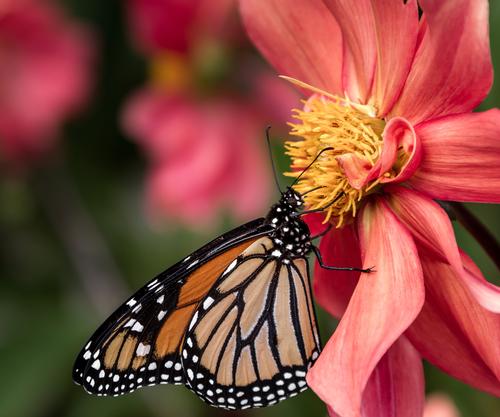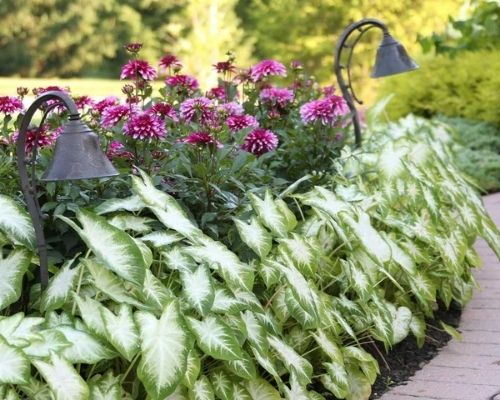Plants Need Good Nutrition, Too!
As gardeners, we are eager to do right by our plants and give them all the light, water and nutrients they need to thrive. But most garden soils don't have enough of the right nutrients for plants to reach their full potential. It's up to us to close the gap.
Adding compost and other organic matter is important for improving the long-term health and fertility of your soil, but fertilizers can also play an important role in providing the readily available nutrients that keep plants growing strong.
Here’s a quick overview of how plants use nutrients, followed by an explanation of how to read a fertilizer label, the role of soil pH, the difference between organic and chemical fertilizers, and several options for ways to fertilize your plants.
Major and Minor Plant Nutrients
Most garden fertilizers contain the three primary plant nutrients: nitrogen (N), phosphorus (P), and potassium (K), plus small amounts of the minor nutrients: magnesium, calcium, sulfur, iron and boron. The N-P-K ratio on the package tells you the percentage – by weight – of each major nutrient.
Nitrogen is essential for fueling new growth. Most soils are low in nitrogen because it’s a water-soluble nutrient that gets washed away by rain and is rapidly consumed by plants and soil microbes.
Phosphorus stimulates root growth and helps plants transfer energy between roots, leaves and flowers. Though many soils contain an adequate amount of phosphorus, it can be unavailable to plants due to soil temperature, microbial activity or the pH of the soil. Applying an all purpose liquid fertilizer early in the season is a good way to guard against a phosphorus deficiency.
Potassium helps plants move water, nutrients and carbohydrates from one area to another. It is also responsible for stimulating early growth, improving hardiness and increasing resistance to insect pests and diseases.
In addition to these primary nutrients, plants also require small amounts of other nutrients including magnesium, calcium, sulfur, iron and boron. Each has an important role in maintaining plant health and productivity.

How to Read a Fertilizer Label
Most all-purpose garden fertilizers contain the three major plant nutrients nitrogen (N), phosphorus (P) and potassium (K) as well as small amounts of magnesium, calcium, sulfur, iron and boron. The N-P-K ratio on the package tells you the percentage – by weight – of each major nutrient.
For example, a 50-pound bag of 10-5-5 fertilizer contains 10% (5-pounds) of nitrogen, 5% (2.5-pounds) of phosphorus and 5% (2.5-pounds) of potassium, with the rest being filler to help disperse the nutrients.
Note: If you purchase an organic fertilizer, you may notice that the N-P-K rating is relatively low compared with most synthetic fertilizers. This is because by law, the label can only reflect immediately available nutrients. Most organic fertilizers also contain slow-release nutrients and trace elements that will become available to your plants over time.

What is Soil pH and Why Does It Matter to Plants?
Plants can absorb nutrients through their roots or through their leaves. Either way, the nutrients need to be in a liquid form in order to be absorbed. In very acidic (pH 4-5) or very alkaline (pH 8-9) soils, plant nutrients may be present but unavailable because they will not dissolve. Most soil nutrients dissolve relatively easily at pH levels between 6 and 7.5, which is why most plants prefer this “neutral” range. That said, some plants actually prefer growing in soils with a high or a low pH. Blueberries and rhododendrons, for example, grow best in acidic soil with a pH of between 4 and 5. Sweet peas, lavender, clematis and buddleia prefer a slightly alkaline soil.
Soil is largely composed of weathered rock fragments and it’s these rocks that determine the soil’s natural pH level. Soil pH is also affected by rainfall, temperature and vegetation. Some parts of the country have characteristically high or low pH levels. The only way to know for sure is to test the pH of the soil. Though home test kits are available, you can get more accurate results by mailing a soil sample to a lab (look online to find a soil testing location near you). Your local Extension Service may also offer soil testing services.
Based on the test results, the lab will make recommendations for adjusting the pH (if needed) and balancing the major and minor nutrients. Changing the pH level may involve adding lime (to raise the pH) or elemental sulfur (to lower the pH). Always take a conservative approach to adjusting pH levels. Changes can and should happen slowly as it's easy to go too far in the opposite direction.
Yearly applications of organic matter (such as compost, shredded leaves or leaf mold) has a “buffering” effect on soil pH and can help keep levels relatively consistent.
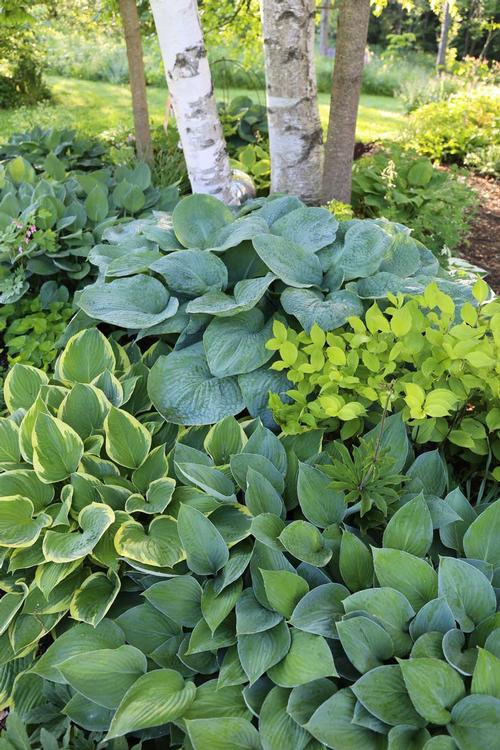
Organic vs. Synthetic Fertilizers
Organic and synthetic fertilizers provide nutrients in different ways.
Organic fertilizers are made from naturally occurring mineral deposits and organic components such as bone meal or composted manure. Most of these substances are not water-soluble, so their nutrients become available to plants gradually, over a period of months or years. Over time, they can increase the soil’s baseline fertility. Organic fertilizers also stimulate beneficial soil microorganisms, help improve the texture and structure of the soil and add important secondary nutrients and trace elements that may be lacking. For a quicker infusion of nutrients, look to liquid fish, seaweed emulsion or compost tea. They are immediately available to plants and can be applied as either a soil drench or as foliar sprays.
Synthetic fertilizers often begin as an organic compound, but are chemically treated to make them water soluble and more immediately available to plants. This can be valuable when plants are growing rapidly and have an immediate need for nutrients. Used exclusively, synthetic fertilizers do little to support soil life and long term fertility. Synthetic fertilizers are available in several forms: granular (in bags), time release (such as Osmocote), and water soluble (like Miracle-Gro).
With all fertilizers, it's important not to exceed the recommended application rate. This is especially true with synthetic fertilizers, as too much fertilizer can “burn” foliage, over-stimulate growth and pollute waterways with nutrient runoff.
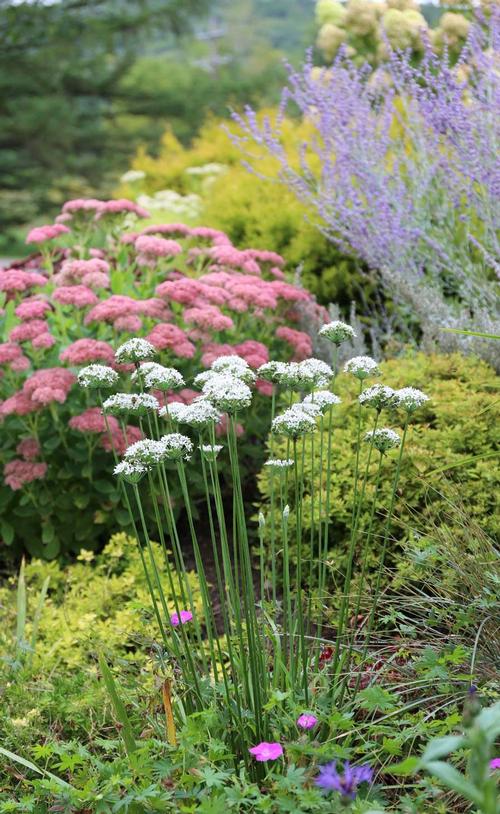
When and How to Fertilize
Not all plants need the same amount of nutrients or need them at the same time during the season. Always follow package directions, because application rates vary depending on the nutrient content, whether it’s a synthetic or organic fertilizer, and whether it is granular, timed-release or water-soluble.
Trees and Shrubs. When planting new trees and shrubs, incorporate fertilizer into the root zone to ensure the plants have access to a slow and steady supply of nutrients. Established trees and shrubs may be fertilized once a year, in early spring. If the soil is fertile and the plantings are healthy and well established, there may be no need for fertilizer.
Perennials. When planting new perennials, mix an organic, all-purpose fertilizer into the planting hole to make sure the plants have access to the phosphorus, potassium and other nutrients they will need. Established perennial gardens, berries and perennial food crops such as asparagus and rhubarb, may be fertilized once a year in early spring.
Flower Bulbs. Spring-blooming bulbs that are treated as annuals, such as tulips and hyacinths, do not need to be fertilized. Bulbs grown as perennials, such as daffodils and alliums, may be fertilized before or after flowering. Summer-blooming bulbs such as dahlias, gladiolas and lilies can be fertilized at planting time. Dahlias, which are particularly heavy feeders, benefit from monthly applications of a water-soluble fertilizer.
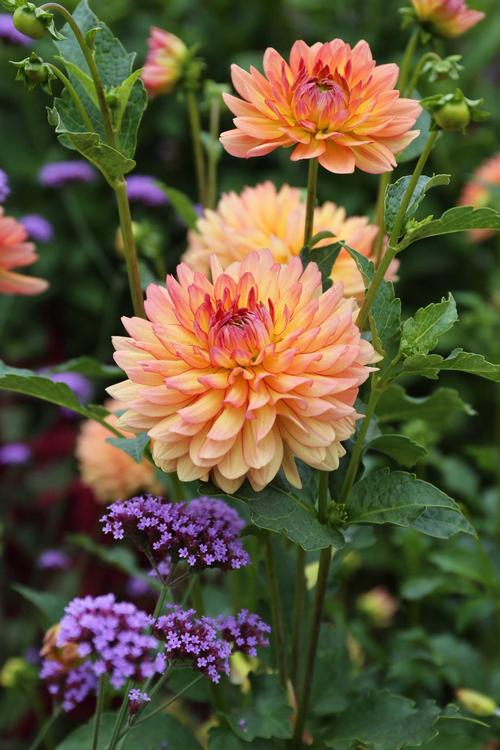
Container Plants. Most container-grown plants require more fertilizer than the plants in your garden. There are two reasons for this. Growing mixes contain few nutrients, and even if you fortify them with compost, daily watering washes most nutrients out of the soil before they can be absorbed by plants. To sustain continuous flowering, most annuals require a steady, readily available supply of nutrients. For best results, fertilize your container plants with a water-soluble fertilizer at half strength, once a week throughout the growing season. Alternatively, apply a timed release fertilizer and refresh it every 6 to 8 weeks.
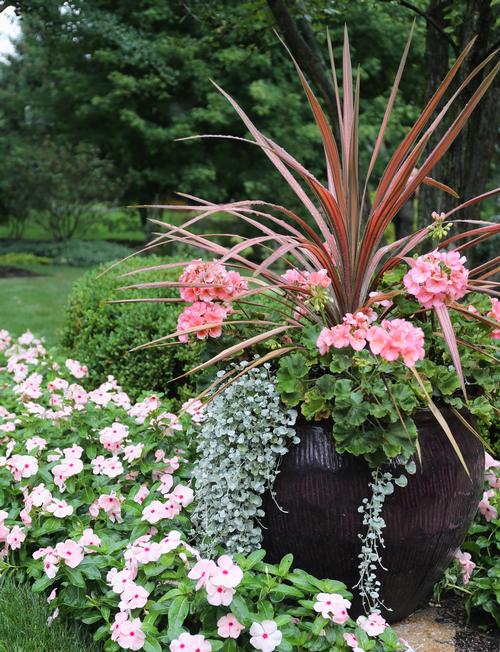
More Isn’t Necessarily Better
Though you don’t want to let your plants go hungry, too much fertilizer can cause problems. Plants that get an excessive amount of nitrogen will produce lots of foliage but few flowers and fruit. Too much phosphorus in the soil makes it difficult for plants to absorb iron and zinc; too much potassium prevents them from absorbing calcium. Excess fertilizer can also wind up in groundwater and waterways, damaging ecosystems and polluting drinking water.
Always follow package instructions for application rates and timing. If in doubt, be conservative. And don't forget that it's important to feed the soil as well as your plants! You can learn more about improving soil health here: How to Prepare Soil for Planting.
